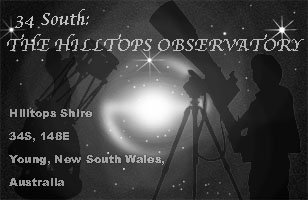First off, congratulations on your 102mm refractor. It is a very capable instrument, but as with all apertures there are of course limitations. However, limitations in what you see are also dictated by several factors, two key ones are your light pollution levels coupled with intrusion of ground lighting, plus observing experience.
The brightness of the sky definitely compromises many objects, in particular extended diffuse types, such as nebulae (M42 in your case) and galaxies (M31 in your case). The light from those objects must compete with the brightness of the sky in order to be seen. Though 102mm is more than enough
aperture to see
Messier 42 well, its dimmer outer fringes will succumb to the brightness of your sky and not be easily seen if at all.
Messier 31 suffers a similar fate. In terms of angular dimension it is quite large but under brighter conditions what is typically seen is only its small brighter inner structure and the dimmer outer portions become very weak or invisible. Though both objects have pretty bright visual magnitudes that is not the only yardstick for determining how easily they should be observed. Because their light is spread out over an area significantly larger than a stellar point, their appearance is effectively dimmed. This gets into the area of what is called surface brightness. I describe this in the following linked article:
viewtopic.php?f=94&t=3848
With regard to your light pollution, you may be looking at the colored
LP maps, and sometimes they do attempt to correlate their static presentation to the
Bortle scale. However, that is a bit of a misnomer. The
Bortle scale is a sliding scale that adjusts to the conditions in the moment. It is determined with the naked eye based on a set of criteria outlined by John
Bortle. The maps are based on satellite imagery using an algorithm to project the spread of sky glow over terrain. They each are a tool, but derived in a very different manner. For example, on my best night outside of Fredericksburg, I would meet the
Bortle 5 criteria outlined in the below linked article. But some nights I might be a
Bortle 6 or even 7 because conditions change, frequently within one evening. My colored map zone is orange, but that is static and does not reflect those nights when conditions are much poorer. Our dark site house on average meets the
Bortle 3 criteria, but on the absolute best nights, it is closer to
Bortle 2. Of course on poorer nights it can degrade to worse than
Bortle 3 to even similar to at home or worse.
https://www.skyandtelescope.com/astrono ... sky-scale/
The other part of the light issue is the intrusion of ground lighting into the observing position. As you noticed, when setting up in the driveway the light was more bothersome to you than when in the backyard where you were better shielded. It is always advisable whenever possible to seek out a corner where such lighting is totally blocked. Even if one must string up a temporary shield using a tarp and rope to block an offending light. What happens here is that the light entering your eye from a streetlight or porch light counteracts your dark adaptive processes and reduces contrast in the eyepiece. Even a little light shining in from the side as you look into the eyepiece or into the front of the tube of the telescope can reduce contrast within the view. So it is very important to try and block out as much of it as possible. Some folks will even go to the point of draping a dark cloth over their head and eyepiece when observing to increase contrast. Another trick is to wear an eye patch over the observing eye at all times that you are not at the eyepiece to help preserve dark adaptation.
As has been mentioned, observing from darker locations, if at all possible, pay huge dividends. I can see things in my 8x50
RACI finder scope at our dark site that might be challenging for your 102mm at home. Dark skies are the great equalizer. I keep my 17.5 inch dobsonian reflector at our dark site house in the western part of the state where it can be used to its greatest advantage. However, when I had it at home, the 10 and 12 inch dobsonians used at the dark site would keep pace with the 17.5 inch used under my suburban skies at home. The difference in light levels made that much difference.
You mentioned M31 being visible naked eye. From our backyard outside Fredericksburg, I can do just that on most clear nights. When conditions are particularly bad I might struggle to do so, or may only catch it with difficulty, but typically it is naked eye visible. But that said, part of that is experience. I've been doing this for decades, and knowing how to see is a critical skill that is built up through experience. You can place an experienced observer next to a new observer and ask them to look through the same telescope at the same object, and they most often will see things quite differently. I know from experience when trying to show a new observer a galaxy through a telescope, that I will describe what I see and then ask them to look. A typical response from them is either "what galaxy" or "I think I see something." That is because their eye is not yet trained to observe. They know to look, but they don't really know how to see. That comes with experience. Its all about perspective. If you don't know what to expect when looking for an object, they can often be either disappointing or not easily seen if seen at all.
So keep at it and gain as much experience as you can behind the eyepiece. In time you will start to see the differences in how much you can detect visually. As I am fond of saying, "the more we learn the more fun we have, and the more fun we have the more we learn."









